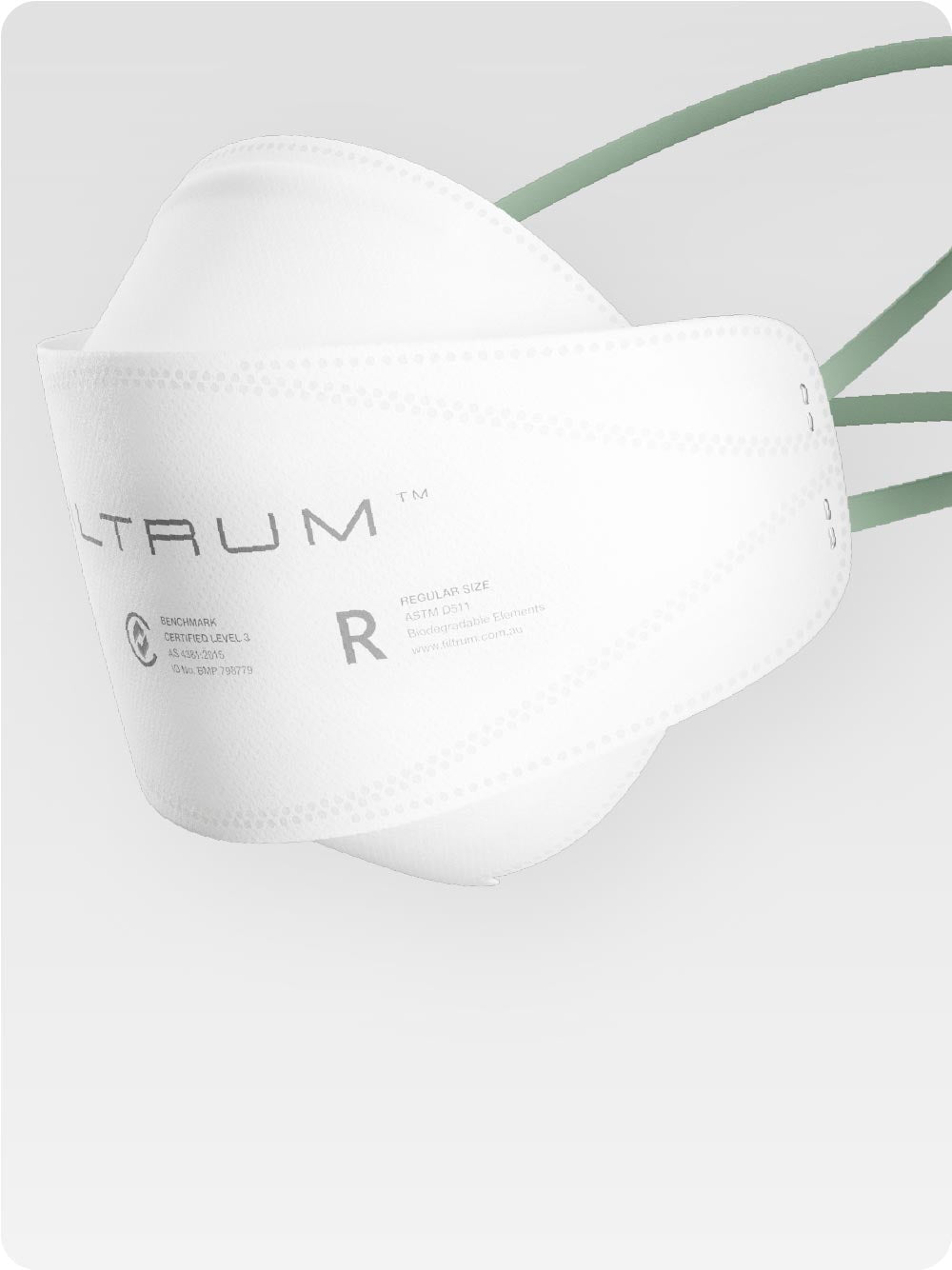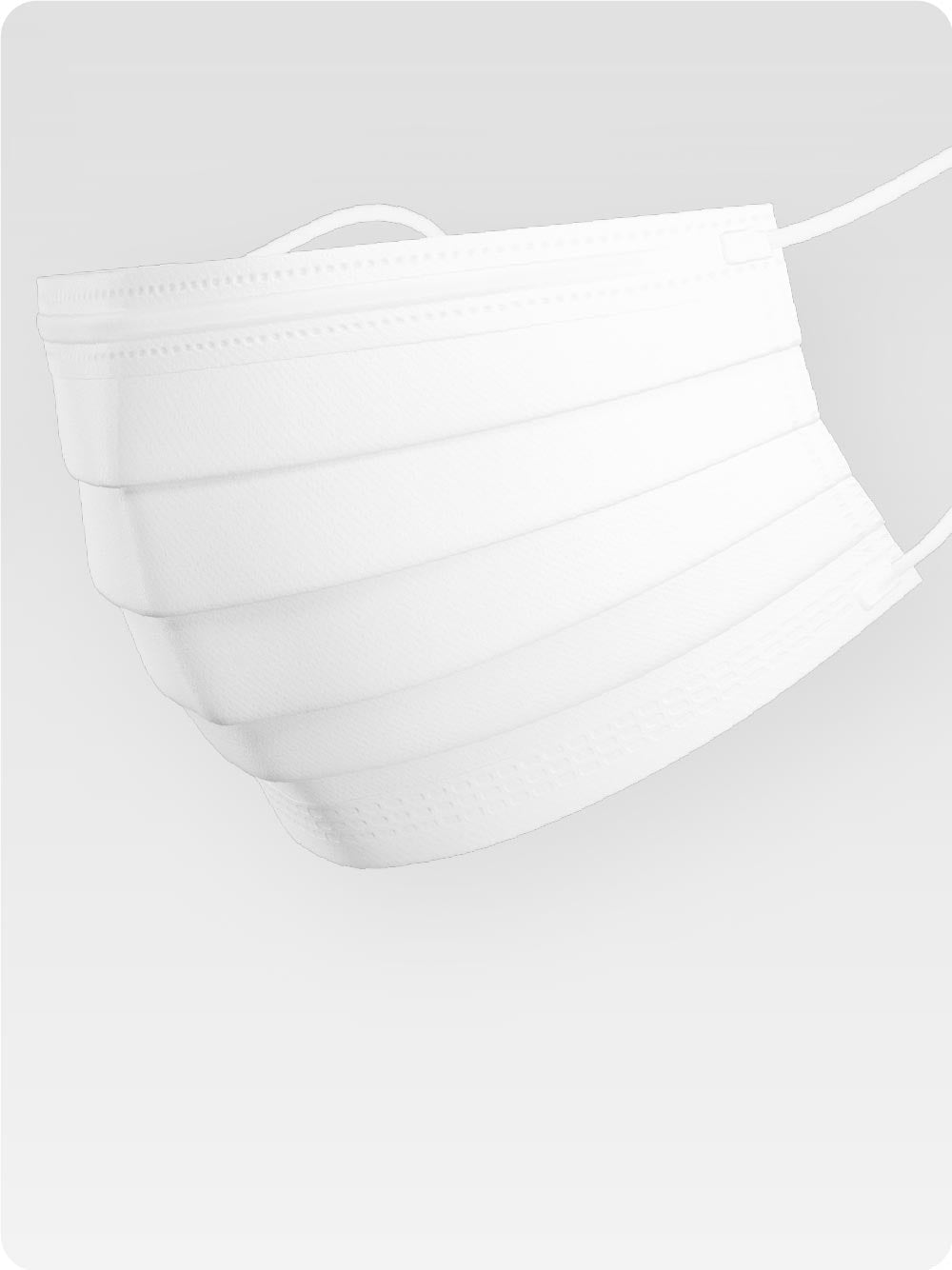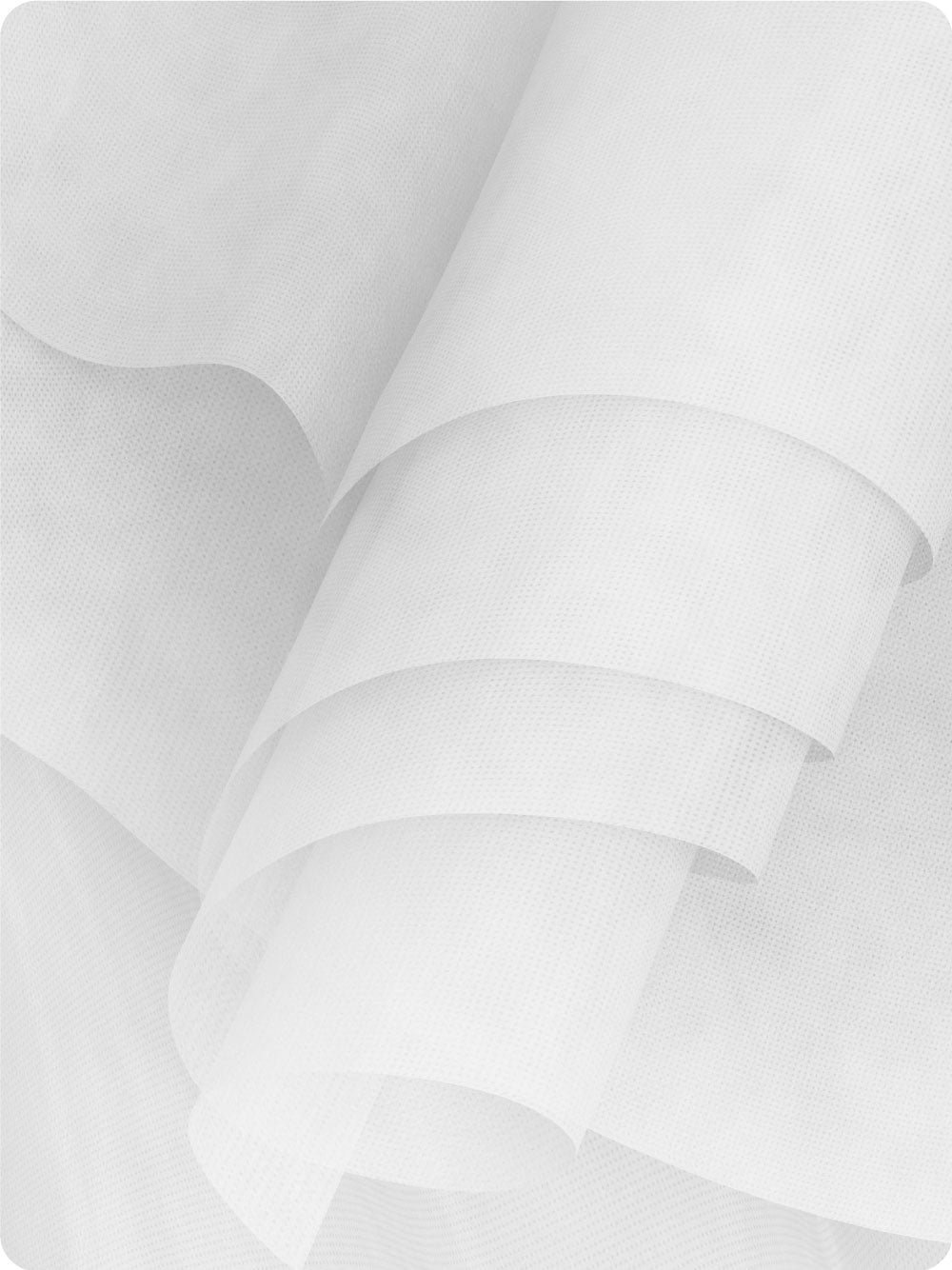
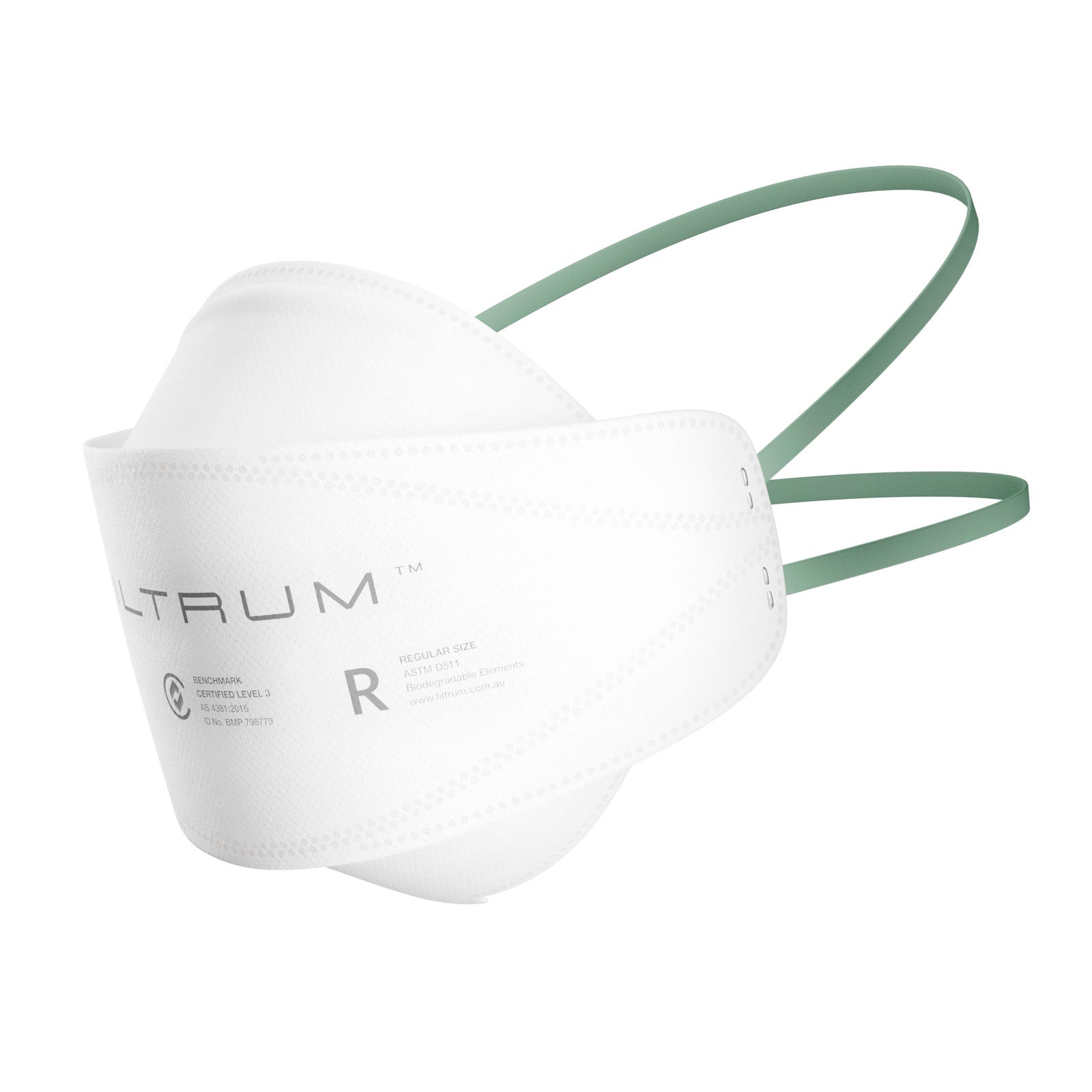

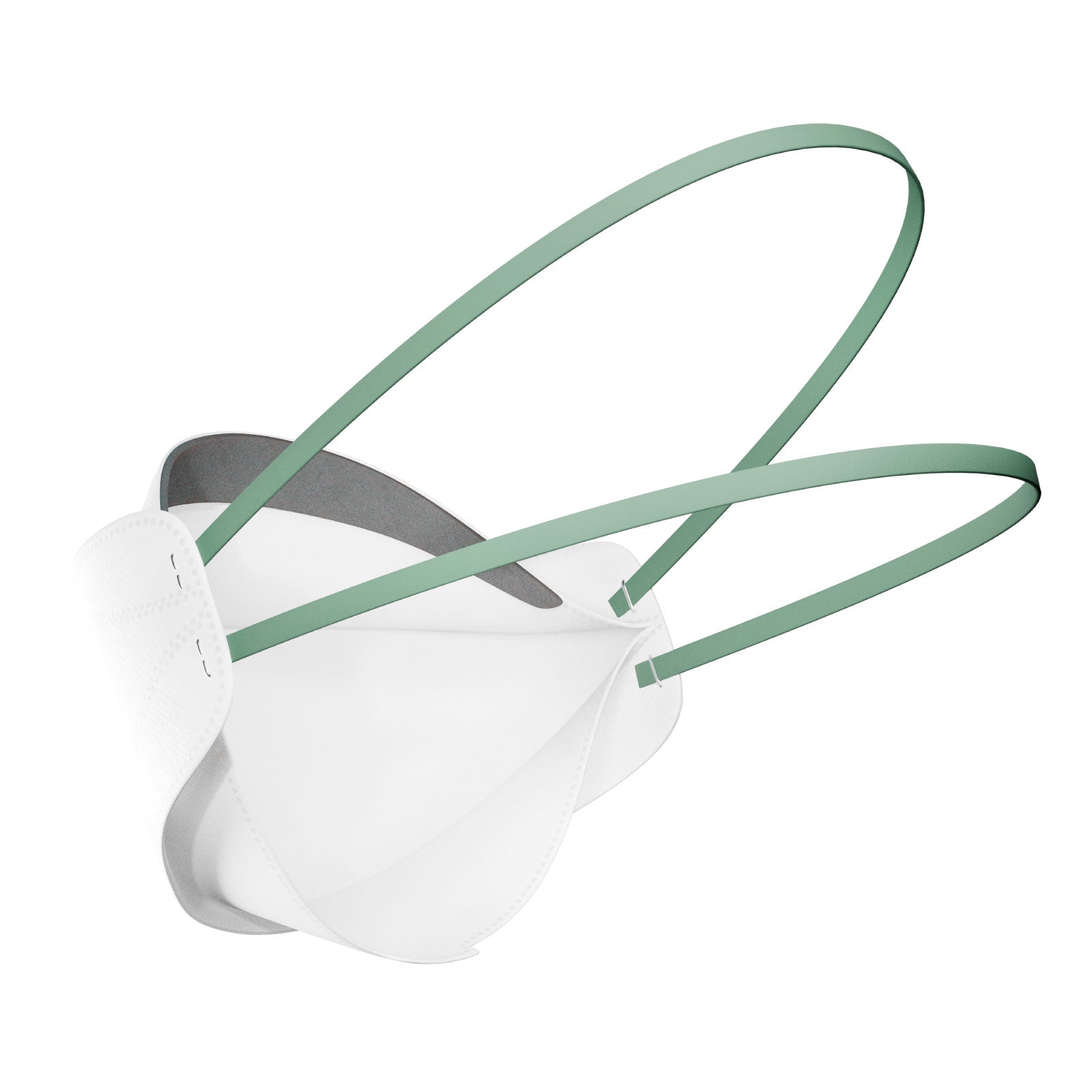


ZERO Surgical Respirator | P2 Level 3 | 20 Pack
Certifications
- Certified P2
- AS/NZS 1716: 2012
- ID No. BMP 798778
- Certified Level 3
- AS 4381:2015
- ID No. BMP 798779
- ARTG: Pending
Protects You From
Certified to filter >99% of:
- Bacteria
- Air pollution
- Smog
- Cigarette Smoke
- Bushfire Smoke
- Pollen
Biodegradability
The ZERO filter is biodegradable and breaks down into non-toxic microplastic-free byproducts, reducing the waste associated with discarded PPE.
Biodegradation testing on our nonwoven technology was completed according to ASTM D5511 the Standard Test Method for Determining Anaerobic Biodegradation of Plastic Materials Under High-Solids Anaerobic-Digestion Conditions. Testing is ongoing, and we will regularly publish updates with new biodegradation results as they become available.
Biodegradation rates of the ZERO Surgical Respirator nonwoven material elements are measured according to the ASTM D5511-18 standard. Biodegradation testing has been conducted on nonwoven material elements and excludes earloops, nose bridge, nose foam and structural layer. The biodegradation rates may change based on the landfill conditions present.
Shipping
- Same-day dispatch for orders placed before 2pm
- Free shipping on orders over $99
- Flat rate shipping: $9.90
- Express shipping: $15
 Designed by Healthcare Professionals
Designed by Healthcare ProfessionalsDeveloped in collaboration with The NSW Ministry of Health.
 Innovation Award
Innovation AwardWinners of The University of Sydney’s Innovation Award.
 >99% Filtration
>99% FiltrationBacterial Filtration Efficiency (BFE) as per ASTM F2101.
 >80% Biodegradable
>80% BiodegradableCertified biodegradable elements as per ASTM D5511-18.
 Level 3 Fluid Resistance
Level 3 Fluid ResistanceFluid protection level 3, 160 mmHg as per ASTM F1861/F1862M-13.
 Engineered for Comfort
Engineered for ComfortStructured trifold design, adjustable nose bridge and breathable filter media.
 Exceptional Breathability
Exceptional BreathabilityLow breathing resistance, maximising wearer comfort, durability and life of product.
 AirLock Nose Seal
AirLock Nose SealWide aluminium nose strip, padded with soft foam for a firm but customisable fit.

Biodegradation Results
Biodegradation testing on our nonwoven technology was completed according to ASTM D5511 the Standard Test Method for Determining Anaerobic Biodegradation of Plastic Materials Under High-Solids Anaerobic-Digestion Conditions. Testing is ongoing, and we will regularly publish updates with new biodegradation results as they become available.
Donning Instructions
Before handling the respirator, wash hands thoroughly with soap for at least 20 seconds to ensure they are clean.
Pull upper and lower panels apart. Place the inner bottom panel under the chin and the upper panel with the nose foam seal over the bridge of the nose and under the eyes.
Pull the straps over the head, making sure they are untwisted. Place the lower strap on the neck below the ears and upper strap on the crown of the head.
Press the nose foam seal down with both hands until it moulds to the contours of the nose bridge. Ensure it creates a firm but comfortable seal to minimise inward air leakage.
To check fit, place hands in front of the respirator and exhale slowly to identify points of air leakage. If air leaks around the nose bridge, readjust the nose foam seal in line with step 4. If air leaks on edges of the respirator, reposition the panels and adjust the head straps until a seal is achieved.
Healthcare workers should perform a fit test assessment in line with local regulatory requirements or onsite policy when working in a healthcare setting, using a PortaCount or alternative quantitative testing device.
Before handling the respirator, wash hands thoroughly with soap for at least 20 seconds to ensure they are clean.
Pull upper and lower panels apart. Place the inner bottom panel under the chin and the upper panel with the nose foam seal over the bridge of the nose and under the eyes.
Pull the straps over the head, making sure they are untwisted. Place the lower strap on the neck below the ears and upper strap on the crown of the head.
Press the nose foam seal down with both hands until it moulds to the contours of the nose bridge. Ensure it creates a firm but comfortable seal to minimise inward air leakage.
To check fit, place hands in front of the respirator and exhale slowly to identify points of air leakage. If air leaks around the nose bridge, readjust the nose foam seal in line with step 4. If air leaks on edges of the respirator, reposition the panels and adjust the head straps until a seal is achieved.
Healthcare workers should perform a fit test assessment in line with local regulatory requirements or onsite policy when working in a healthcare setting, using a PortaCount or alternative quantitative testing device.
Doffing Instructions
Avoid touching the respirator facepiece when removing as it may be contaminated from use.
Pull the bottom strap from the neck over the top of the head.
Pull the top strap over the top of the head.

Dispose of the respirator in a general waste stream if used in a non-clinical setting. If used in a clinical setting, dispose of the respirator in the designated waste container following the site's infection control and prevention guidelines.
Avoid touching the respirator facepiece when removing as it may be contaminated from use.
Pull the bottom strap from the neck over the top of the head.
Pull the top strap over the top of the head.
Dispose of the respirator in a general waste stream if used in a non-clinical setting. If used in a clinical setting, dispose of the respirator in the designated waste container following the site's infection control and prevention guidelines.


